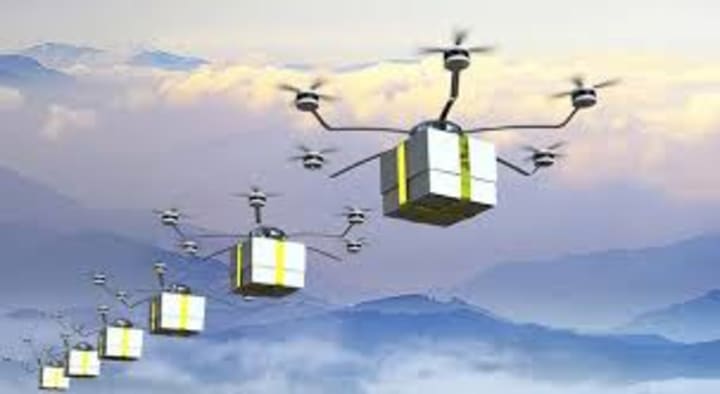2023 FAA's: Six (6) Advancements in Aviation Safety and Regulation
Last Quarter of the Year Checkups

In such a dynamic time, over the past few years, we've seen quite a number of dramatic changes in many industries. In the aviation sector the shifts continue to advance. The Federal Aviation Administration (FAA) has been at the forefront of ensuring the safety and efficiency of the aviation industry in the United States. With an ever-evolving technological landscape and the need to adapt to new challenges, the FAA continues to implement measures and regulations that drive progress and maintain the highest standards of safety. Let's explore some of the latest updates from the FAA that have been making headlines, throughout the year.
1. Integration of Drones into National Airspace:

Unmanned Aircraft Systems (UAS) or drones have become increasingly popular for various commercial and recreational applications. The FAA has been actively working on integrating drones safely into the national airspace. Recent updates have focused on enabling the Beyond Visual Line of Sight (BVLOS) operations, which allow drones to fly beyond the operator's direct line of sight. BVLOS operations have the potential to revolutionize industries like package delivery, infrastructure inspection, and emergency response. The FAA's efforts in this area are driven by a balance between innovation and safety to ensure the seamless integration of drones into the airspace system.
2. Introduction of Remote ID for Drones:

Remote Identification (Remote ID) is another significant initiative by the FAA to enhance safety and security in drone operations. With Remote ID, drones are required to transmit identification information while flying, making it easier for law enforcement and other authorities to identify and track drones. This measure helps mitigate security risks and promote responsible drone usage, particularly in sensitive areas such as airports and critical infrastructure.
3. Advanced Air Traffic Management:

To accommodate the growing number of aircraft in the airspace, the FAA has been investing in advanced air traffic management technologies. These initiatives aim to optimize air traffic flow, reduce delays, and enhance efficiency. The implementation of NextGen technologies, including advanced automation and satellite-based navigation systems, ensures safer and more predictable flight paths, reducing fuel consumption and environmental impact.
4. Expansion of Supersonic Flight Testing:

With the resurgence of interest in "Supersonic Travel," the FAA has been supporting research and development efforts to facilitate the safe testing of supersonic aircraft. Companies working on supersonic projects are partnering with the FAA to develop new regulations for supersonic flight testing overland. The aim is to strike a balance between the technological advancements and noise pollution concerns, allowing the aviation industry to explore supersonic travel possibilities responsibly.
5. Continued Emphasis on Safety Management Systems (SMS):

Safety Management Systems (SMS) have become a fundamental aspect of aviation safety worldwide. The FAA continues to encourage the implementation of SMS within airlines, airports, and other aviation organizations. By adopting SMS, aviation entities can proactively identify and address safety risks before they escalate, fostering a culture of safety and continuous improvement.
6. Drone Delivery Initiatives:

In line with the growing interest in drone deliveries, the FAA has been collaborating with various companies to test and develop commercial drone delivery operations. Several companies have received FAA approvals to conduct drone delivery trials in select areas. The FAA's focus remains on ensuring that these operations are conducted safely and without compromising airspace integrity.
Narrowing all of this out, the Federal Aviation Administration continuously remains committed to advancing aviation safety, embracing technological innovations, and fostering responsible growth in the aviation industry. Through its proactive approach to regulation and cooperation with industry stakeholders, the FAA plays a vital role in shaping the future of aviation in the United States. As the industry continues to evolve, the FAA will undoubtedly be at the forefront of ensuring a safe and efficient airspace system for all.
About the Creator
Yohannes Amanuel
Aviation professional since 2014' starting as many have at the very bottom of the totem pole, as an "underwing," line serviceman - to now - student traditional and remote pilot(UAVs).
Enjoyed the story? Support the Creator.
Subscribe for free to receive all their stories in your feed. You could also pledge your support or give them a one-off tip, letting them know you appreciate their work.






Comments
There are no comments for this story
Be the first to respond and start the conversation.